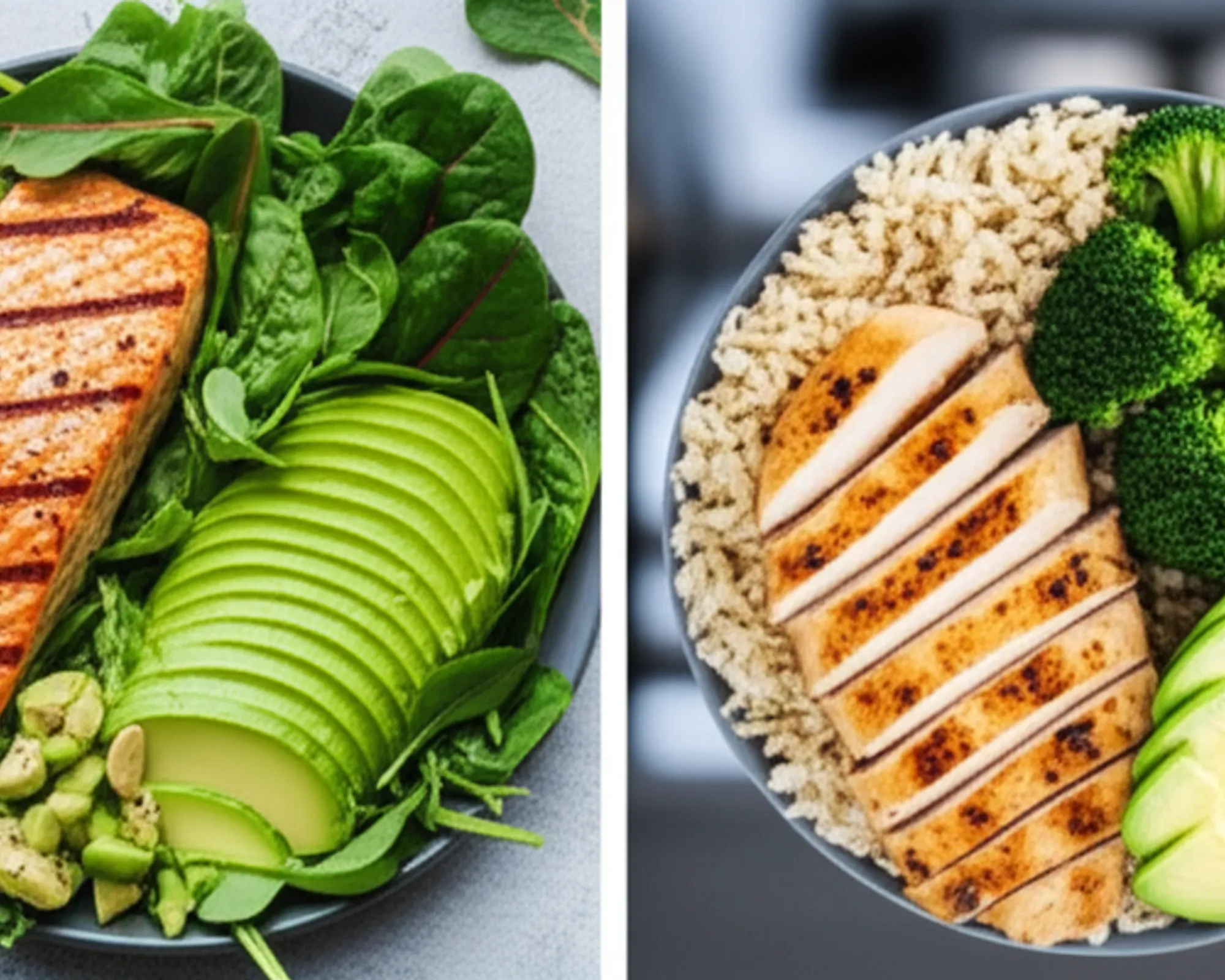Gym Workouts for Fat Loss vs Muscle Gain

Embarking on a fitness journey often brings two primary goals to mind: shedding unwanted fat and building lean muscle. While both contribute to a healthier, stronger physique, the strategies employed in the gym for fat loss versus muscle gain, though sometimes overlapping, have distinct differences. Understanding these nuances is crucial for optimizing your efforts and achieving your desired results efficiently.
The Fundamental Differences in Goals
At their core, fat loss and muscle gain represent opposite physiological processes. Fat loss, or cutting, primarily involves creating a caloric deficit, forcing your body to tap into its stored fat reserves for energy. Muscle gain, or bulking, requires a caloric surplus, providing your body with the extra fuel and building blocks needed to repair and grow muscle tissue. The way you train and fuel your body will significantly shift depending on which goal you prioritize.
Training for Fat Loss: Burning and Sculpting
When your primary objective is fat loss, your gym workouts should focus on maximizing calorie expenditure and maintaining muscle mass. While a caloric deficit is the most critical factor, your training can significantly accelerate the process and help preserve muscle, preventing a "skinny fat" appearance.
Cardiovascular Training: Your Calorie-Burning Ally
- High-Intensity Interval Training (HIIT): Short bursts of intense exercise followed by brief recovery periods are incredibly effective for calorie burning and boosting your metabolism (EPOC - Excess Post-exercise Oxygen Consumption) for hours after your workout. Think sprints, battle ropes, or burpees.
- Steady-State Cardio: Longer, moderate-intensity sessions (like jogging, cycling, or elliptical) are great for sustained calorie burn and improving cardiovascular health, especially on rest days from heavy lifting.
Resistance Training: The Muscle Preserver
Contrary to popular belief, resistance training is not just for muscle gain; it's absolutely vital for fat loss. Muscle is metabolically active, meaning it burns more calories at rest than fat tissue. Therefore, preserving and even building some muscle during a fat loss phase can boost your metabolism.
- Compound Movements: Prioritize exercises that work multiple muscle groups simultaneously, like squats, deadlifts, bench presses, overhead presses, and rows. These movements burn more calories and elicit a greater hormonal response.
- Moderate Weight, Higher Reps (Sometimes): While heavy lifting is still beneficial for muscle preservation, incorporating sets with moderate weights and higher rep ranges (10-15 reps) can increase the metabolic demand of your workouts.
- Circuit Training & Supersets: Combining multiple exercises with minimal rest in between keeps your heart rate elevated, turning your weight training into a powerful metabolic conditioner.
Training for Muscle Gain: Building and Strengthening
If your goal is to pack on muscle, your gym strategy will shift towards progressive overload, specific rep ranges, and ensuring adequate recovery and nutrition for muscle repair and growth.
Resistance Training: The Cornerstone of Muscle Growth
Muscle hypertrophy (growth) occurs when muscle fibers are damaged during exercise and then repair themselves to be bigger and stronger, provided the right stimulus and nutrients are present.
- Progressive Overload: This is non-negotiable. To continuously grow, you must continually challenge your muscles. This means gradually increasing the weight lifted, the number of reps, sets, or decreasing rest times over time.
- Targeted Rep Ranges: For hypertrophy, the sweet spot is generally 6-12 repetitions per set, performed with challenging weights that allow you to reach muscular failure within that range.
- Focus on Compound & Isolation Movements: Compound exercises (squats, deadlifts, presses, rows) build foundational strength and mass, while isolation exercises (bicep curls, tricep extensions, lateral raises) help to target specific muscles for greater definition and symmetry.
- Adequate Volume and Intensity: Ensure sufficient sets and reps per muscle group per week, and push yourself to near failure on most sets.
Cardiovascular Training: Mindful Inclusion
While cardio is not the primary driver of muscle gain, it still has a place. Moderate cardio can improve cardiovascular health, aid recovery by increasing blood flow, and improve work capacity in the gym. However, excessive cardio can interfere with muscle growth by creating too large a caloric deficit or tapping into energy reserves needed for lifting.
- Low-Intensity, Steady-State (LISS): 20-30 minutes, 2-3 times a week, can be beneficial without being overly taxing.
- HIIT (Sparingly): Can be used for conditioning, but monitor its impact on your recovery and energy levels for lifting.
The Nutritional Divide: Fueling Your Goals
Perhaps the most significant difference between fat loss and muscle gain lies in nutrition.
- For Fat Loss: You need a consistent caloric deficit. Prioritize high-protein intake (to preserve muscle), plenty of fiber from vegetables and whole grains (for satiety), and healthy fats.
- For Muscle Gain: You need a consistent caloric surplus. Again, high protein intake is crucial (the building blocks for muscle). Carbohydrates are vital for energy during workouts and replenishing glycogen stores, and healthy fats support hormone production.
In both scenarios, adequate protein (around 1.6-2.2g per kg of body weight) is paramount for muscle preservation during a cut and muscle synthesis during a bulk.
Can You Do Both Simultaneously (Body Recomposition)?
The idea of losing fat and gaining muscle at the same time, often called body recomposition, is the holy grail for many. While challenging, it is possible under certain circumstances:
- Beginners: Those new to resistance training often experience "newbie gains," where their bodies are highly responsive to training stimuli.
- Detrained Individuals: People returning to training after a long break can also achieve recomp.
- Individuals with High Body Fat: Those with significant fat stores can more easily tap into these reserves for energy while still having enough calories for muscle synthesis.
- Steroid Users: Anabolic steroids drastically enhance the body's ability to build muscle and lose fat simultaneously, but come with significant health risks.
For intermediate to advanced lifters, body recomposition becomes much harder and slower. It's often more efficient to cycle between periods of focused fat loss and focused muscle gain.
Hybrid Approaches and Prioritization
If you're not a beginner and want to make steady progress, it's generally more effective to prioritize one goal at a time. This doesn't mean completely neglecting the other. For example:
- When Cutting: Maintain strength training with heavy weights to preserve muscle, while incorporating more cardio and a strict caloric deficit.
- When Bulking: Focus on progressive overload in strength training and a caloric surplus, but don't shy away from some moderate cardio for cardiovascular health and work capacity.
The Overarching Importance of Consistency, Nutrition, and Recovery
Regardless of your goal, three pillars remain constant:
- Consistency: Showing up, day in and day out, and sticking to your plan is more impactful than any single workout.
- Nutrition: As discussed, it's arguably more critical than training. You can't out-train a bad diet.
- Recovery: Adequate sleep (7-9 hours) and managing stress are vital for muscle repair, hormone regulation, and overall progress.
Conclusion
Both fat loss and muscle gain require dedicated effort in the gym, but their specific strategies diverge in terms of training volume, intensity, exercise selection, and crucially, nutritional approach. While body recomposition is a tempting idea, for most individuals, focusing on one goal at a time will yield the most efficient and satisfying results. Understand your current body composition, define your primary goal, and then tailor your workouts, nutrition, and recovery to support that objective. With consistency and a smart approach, you'll be well on your way to a stronger, leaner you.


